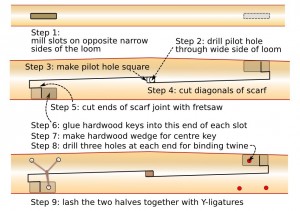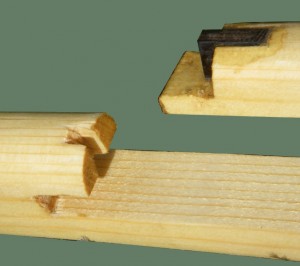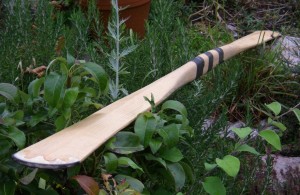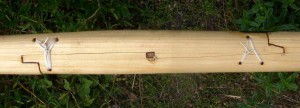There must be many paddlers who need to divide their paddle for train or air travel but will then keep it at full length for the expedition period. A traditional solution is the scarf joint. For this particular purpose the joint needs to be keyed at the ends to prevent twisting, and it needs a removable key in the middle to stop it pulling apart.
The construction is sketched in the diagram (click to enlarge). The first thing is to mill two slots to hold keys against lateral twisting. The central drill hole is filed square. Then an electric jig saw can be inserted to make the long straight cuts. A fretsaw is used for the tenons, which are cut straight across, exposing the slots which are then filled with hardwood keys, glued into one part of the joint. The central key is a wedge of hardwood which is removable and easy to carve from drifwood if the specially made key gets lost.
The joint is oiled with boiled linseed oil. It is assembled and held fast by about three turns of duct tape, which doesn’t adhere strongly to the oiled wood, so can be removed for transport.
For a proper vernacular solution, one can drill or groove the joint so it can be lashed together with sinew instead of being wound with industrial sticky tape. The three hole lashing gives a very tight connection. It has endured for months without any sign of slack in the connection. Indeed, it has less play than a cylindrical tube connection.
The paddle design is by Lars Herfeldt (see the previous post about kayak building). It is a modified Aleutian design, unsymmetrical and with a thickened mid section, which gives a strong scarf joint with very little increase in the moment of inertia of the paddle. It is made of Sitka Spruce. A jointed paddle also allows construction from shorter pieces of wood, which are easier to find without faults.
tim



